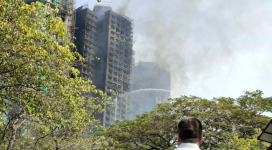New Delhi - The minority Christian community in India, despite having a low illiteracy rate, suffers from a high unemployment rate and are under-represented among the self-employed and over-represented among wage laborers, Minister for Minority Affairs A.R. Antulay has warned.
The unemployment rate among Christians was higher than among Hindus and Muslims, he said, May 3.
The figures on unemployment among Christians are given in the Report No. 521 of the National Sample Survey Organization (NSSO) 61st round, and the details are available on the web site of the Ministry of Statistics and Program Implementation, Antulay said replying to a question in the Rajya Sabha.
Asked whether Government have any plan to offer special measures to generate employment among the tribal Christians in the States of Jharkhand, Chhattisgarh, Orissa, Madhya Pradesh, Gujarat and Rajasthan, the minister said the new 15-Point Program for the Welfare of Minorities envisaged earmarking of 15 percent of outlay for minorities, including tribal Christians.
He said three schemes were directly related to employment generation, i.e. Swarnjayanti Gram Swarojgar Yojna (SGSY), Swarn Jayanti Shahari Rojgar Yojana (SJSRY) and Sampoorna Grameen Rozgar Yojana (SGRY).
Under the National Rural Employment Guarantee Programme (NREGP), a total of 80 districts covered are in these six States, he said.
The government survey has indicated that in rural areas, the unemployment rates were higher among the Christians (4.4 percent) as compared to those among the Hindus (1.5 percent) or Muslims (2.3 percent). In the urban areas also the same pattern was observed.
According to the survey on employment and unemployment situation among major religious groups in India for 2004-05, Christians also had the lowest illiteracy rate for both rural (20 percent for men and 31 percent women) and urban areas (6 percent for men and 11 percent for women).
The survey covered 7,999 villages and 1,24,680 sample households. Except for rural women, the proportion of literates among the Hindus was higher as compared to Muslims.
The worker population ratio (WPR or the proportion of people employed) among men in rural area was highest among Christians (56 percent), followed by Hindus (55 percent) and Muslims (50 percent). For women, the ratio was 36 percent for Christians, 34 percent for Hindus and 18 percent for Muslims.







